2021 has thrown many curveballs our way, so to wrap up the year, let’s add some fun into the mix. HRM takes a look at some incredibly innovative office designs.
Drab boardrooms and rows of desk cubicles don’t have to be the default office design. These six workplaces are saying goodbye to traditional designs and putting their own flavour on the office with some groundbreaking and innovative ideas.
1. Inventionland, Pittsburgh, USA
Inventionland, an immersive work environment and idea incubator, looks more like a theatre set than an office space. Each of the 16 themed rooms at the company’s Pittsburgh headquarters are a feast for the eyes.
In the Concept Kitchen, you’ll find creators transforming their half-baked ideas into cutting-edge products.
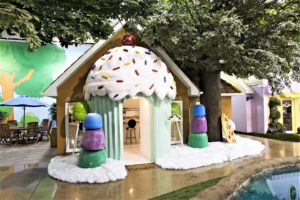
Inventionland’s Pirate Ship, decked out with state-of-the-art equipment, is where high-tech products and games are born.
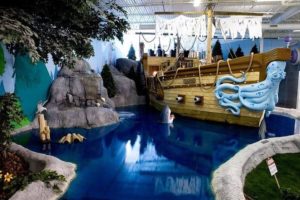
Over in Chipper’s Treehouse, creators explore their childlike wonder and curiosity, dreaming up wild ideas in a space that’s entirely made of whiteboard – including the table and chairs.

There’s certainly no shortage of inspiration for the specialised designers, artists, writers, illustrators, strategists and seamstresses who work on site.
2. Ogilvy and Mather, Guangzhou, China
Global communications company Ogilvy and Mather relocated from Guangzhou’s CBD to a new urban arts and culture arena on the city’s edge in the mid-2000s. The move was driven by a pressing need to accommodate a growing workforce, and to inspire creativity through a fresh avant-garde office design.
The company was looking for innovative ways to attract new talent, and designing an office bursting with creativity that bears a strong resemblance to an amusement park was a bold way to stand out from the pack.
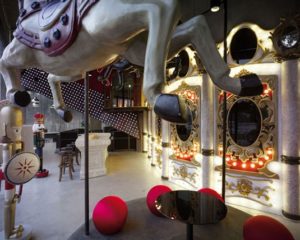
Themed a ‘Carnival of Ideas’, the premises boast a carousel horse that functions as an overhead projector, life-size nutcrackers and a faux ferris wheel. Mimicking a cinema marquee, a striking red staircase with rows of light bulbs runs throughout the complex.
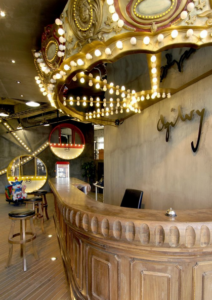
At the time of creation, Wendy Leung, Director of M Moser, the architecture firm tasked with designing the new office space, said, “The [Carnival of Ideas] theme became the actual concept for creating a space full of unexpected, playful details. It is a workplace that is meant to compel its users to take a journey of discovery.”
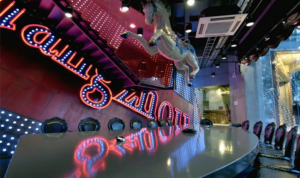
3. hipages, Sydney, Australia
Aligning with its purpose of connecting homeowners or businesses with trusted tradies, hipages hoped to create a ‘home away from home’ in Sydney’s CBD.

“Throughout the office we have designed many spaces to reflect areas that people would find in their actual homes. And our meeting rooms are designed to showcase different trades, like our carpenter room (see below),” says Marianne Passafaro, Head of People & Culture at hipages.
“This was intentionally designed and was purposely led to pay homage and respect to our tradies, so our team remembers the impact they’re having towards our tradies and their homes everyday.”
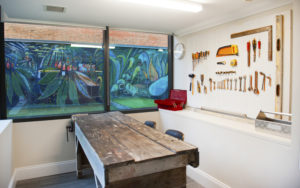
Passafaro says hybrid working arrangements have highlighted an opportunity for hipages to revamp its office within the next year.
With many employees taking advantage of flexible work arrangements to focus on more individual-based tasks at home, there is a greater need for collaboration spaces in the workspace.
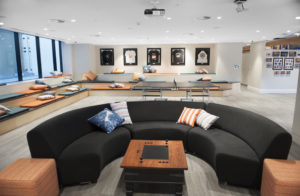
“We have found a real need and opportunity to create further collaboration spaces on the floor… By enhancing these spaces it will help make the office experience a more meaningful one, as our new spaces will enable impactful opportunities to connect.”
Read HRM’s article on how to create effective collaborative spaces in the office.
4. Saatchi & Saatchi, Bangkok, Thailand
Multinational communications and advertising company Saatchi & Saatchi harnesses out-of-the-box thinking.
Everyday objects in its Bangkok office are given an unexpected twist.
Bicycle tires form the legs of a large meeting table, giving employees the flexibility to wheel the table into separate sections for break-out conversations.
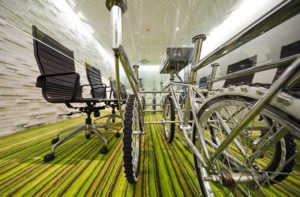
The entranceway functions as a reception area by day, but when work is cast aside for out-of-hours socialising, the table transforms into a mobile cafe and bar.
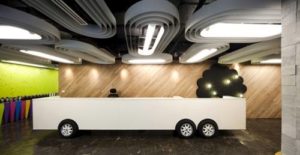
Saatchi & Saatchi’s small meeting rooms also give the appearance of train compartments.
You might notice a common theme in each of these descriptions – the office design is all about being agile and flexible, and moving forward in the same direction.
5. Aurecon, Brisbane, Australia
Brisbane’s 25 King Street takes the prize for Australia’s tallest and largest engineered-timber office building.
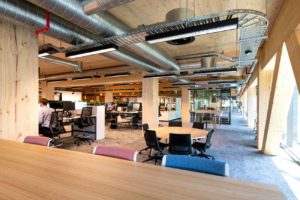
In partnership with Lendlease, the global engineering company Aurecon constructed an ecologically sustainable development with timber sourced from certified sustainably-managed forests.
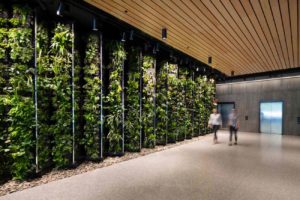
The waste-free production process ensures timber has a lower carbon footprint than other building materials.
With rooms awash in sunlight, there’s also a spot of greenery in most directions you turn, giving 25 King Street an open and warm ambience.

6. Tripadvisor, Sydney Australia
While this office isn’t nearly as unusual as the ones displayed so far, if a new office fitout is on the cards for 2022, this might be a more attainable design to strive for.
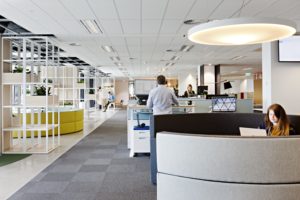
Tripadvisor’s Australia office centres around the concept of radical openness by encouraging transparency and the open sharing of knowledge across the company. Semi-enclosed scrum areas form the location for morning meetings.
Nicholaus Lupi, Principal of Workplace Design and Construction at Tripadvisor, says this openness in a meeting space would typically disrupt employees’ ability to focus on independent work, but Tripadvisor considered ‘when’ this space would be used, and not just ‘how’.
“Given the time zone differences between our Sydney office and several of our other offices around the globe, our teams in Sydney generally have a small window of time to communicate with their team members in other offices,” says Lupi.
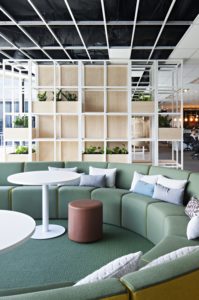
“This meant that these scrum spaces would be designed to accommodate these peak times and, in terms of the schedule for when they would be utilised most, it would be consistent amongst all teams in the Sydney office, therefore alleviating disruption concerns.
“We hypothesised that the open scrum areas, open soft seating and banquette areas would increase the transparency due to the nature of collaborating in an open office environment, and we believe that to truly be the outcome.”
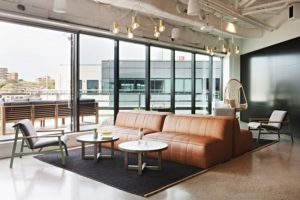
The company also has fully enclosed meeting rooms to ensure confidential conversations can still take place.
True to the company’s purpose and mission, each meeting room is branded with a different travel destination. Hot air balloons are pictured rising above Cappadocia’s rock formations in one room, helicopters fly over the Grand Canyon in another, and a slice of home takes centre stage in another with a sprawling image of Bondi Beach.
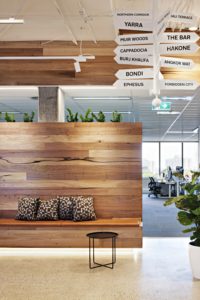
“With our workplace design, it is very much about striking a balance between the open spaces and enclosed spaces, with the notion that we try to push the limits through innovation,” says Lupi.
While many companies won’t have the desire or means to revamp their offices into a visual wonderland, it will be interesting to see if any of these ideas take flight on a smaller scale. As we enter 2022, organisations are designing work models to appeal to the future employee’s values and priorities – could some of these ideas crop up in our workplaces?
Think outside the box to bring out the best in your teams.
Book in for AHRI’s short course on Creating High Performance Teams on 17 March.


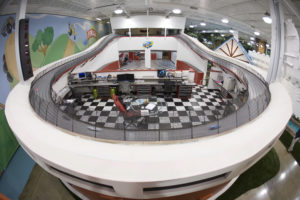
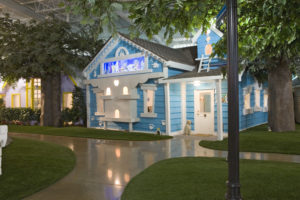
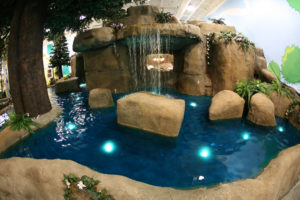
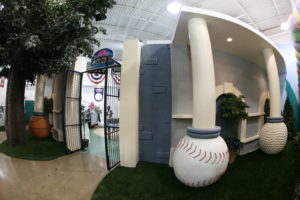
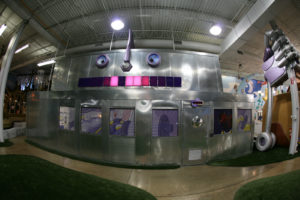
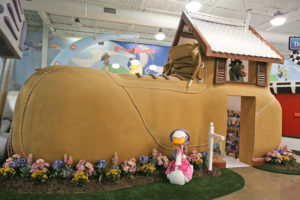
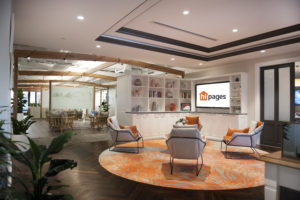
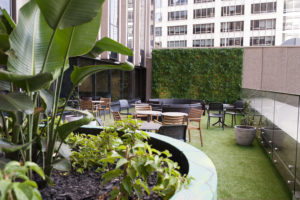
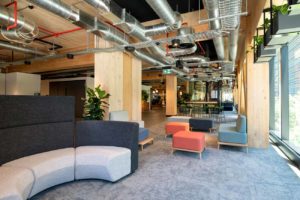
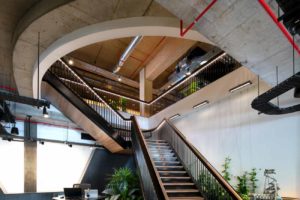
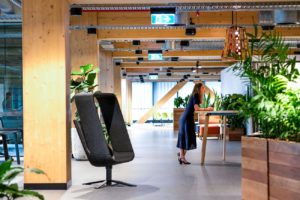
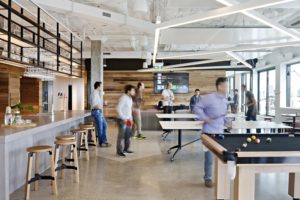
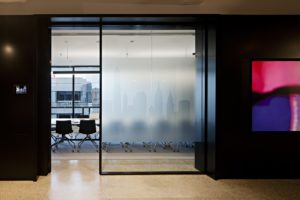
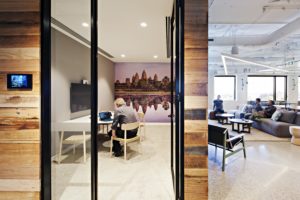

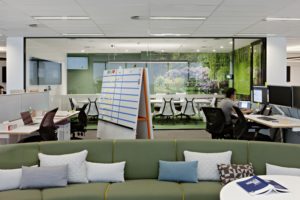
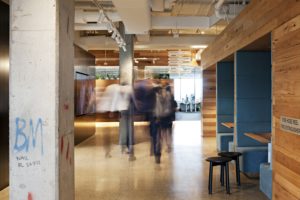
And not an ergonomic piece of furniture in sight. A perfect way to discriminate against the 1 in 5 people who have chronic injuries and pain. (Its also indirect Age Discrimination, because the older a person is the more likely they are to have a chronic pain injury). Ergonomic furniture ensures people with injuries have equal access to the workplace. Ergonomic furniture also protects every person in the workplace from new injuries. AHRI needs to be more on the ball pointing out how these “trends” negatively impact on equal employment access. to large sections of the workplace. You can be… Read more »